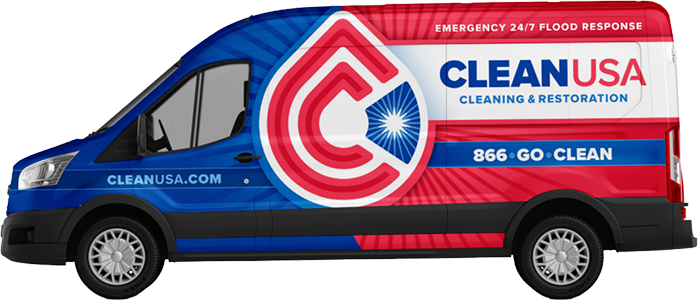Water damage can wreak havoc on your property, but is it irreversible? Knowing the signs of permanent water damage is crucial in taking timely action to minimize any long-term effects.
From immediate effects to more long-term indicators, there are several cues that you can watch out for to determine if your water damage is permanent.
So, how do you know if water damage is permanent? In this article, we will explore the signs and provide actionable insights to help you assess the severity of the damage on your property.
Key Takeaways
- Recognizing the signs of permanent water damage is crucial to take timely action
- Immediate effects of water damage can indicate the potential severity of damage
- Mold growth and structural weakness can indicate long-term damage
- Warping and staining of materials are common visual signs of water damage
- Electrical and plumbing systems can also be affected by water damage
Immediate Effects of Water Damage
Water damage can occur suddenly or gradually and can have immediate effects on your property, which can lead to long-term damage if not addressed promptly.
The immediate effects of water damage might not always be visible, but there are some common signs you can look out for. These include:
- Discoloration: Stains or discoloration on walls, ceilings, or floors could indicate water damage.
- Odor: A musty, damp smell could suggest the presence of mold or mildew resulting from water damage.
- Peeling paint or wallpaper: Water can cause paint or wallpaper to lift and peel away from the surface.
- Buckling or warping: Water can cause wood flooring to buckle or warp, and carpets to become saturated and pull away from the floor.
- Visible mold growth: This can appear as black, blue, green, or white fuzzy patches on walls and floors.
If you spot any of these signs, it’s crucial to take immediate action before the damage worsens and becomes permanent. Consider contacting a professional water damage restoration company to assess the severity of the damage and provide the necessary repairs.
Mold and Mildew Growth
If your property has suffered water damage, mold and mildew growth can indicate long-term problems. These fungi thrive in damp environments and can quickly colonize an area after a water leak or flood. If left unchecked, mold and mildew can cause respiratory problems, aggravate allergies, and damage your property’s structure and contents.
The presence of mold and mildew is a clear sign that water damage has occurred, and it can also indicate that more extensive damage has taken place behind walls or under flooring. In addition to being unsightly and unpleasant, mold and mildew can cause significant health problems, so it is crucial to address the issue promptly.
To prevent mold and mildew growth, it’s essential to address any water damage immediately. This may involve drying out the affected area, removing any contaminated materials, or calling in a professional water damage restoration team to do the job.
Regular inspections, particularly after heavy rain or flooding, can help you identify any signs of water damage or mold growth early on. Early detection and remediation can help prevent the spread of mold and mildew and minimize the long-term damage to your property.
Structural Integrity Compromises
Water damage can be a severe threat to the structural integrity of a building. If the water damage is severe and goes unaddressed, it can lead to long-lasting damage. The damage can be structural and may lead to irreversible deterioration, ranging from weak walls to structural collapse. Moreover, the compromised structural components can pose a risk to the safety of the occupants.
The following are indicators of structural integrity compromise caused by water damage:
| Indicators | Description |
|---|---|
| Cracks in Walls and Foundation | Water can seep into the building’s foundation, causing the foundation to crack and shift. |
| Uneven Floors and Sloping | Water damages the wooden structures, causing them to warp, and they no longer provide level support. |
| Skewed Door Frames and Windows | Water damage can distort the frames and cause them to be off-center. |
| Visible Mold and Mildew | Long-term exposure to moisture can allow mold and mildew to grow on wood and other materials, compromising structural integrity. |
If you spot any of these signs, it is essential to take immediate action to prevent long-term damage by calling a professional water damage restoration company. Remember, even minor water damage can lead to severe structural issues over time. Thus, addressing water damage and restoring your property to its pre-loss condition should not be delayed.
Warping and Staining
When water seeps into materials, it causes warping, which can be an indicator of permanent damage to your property. A common type of warping associated with water damage is cupping, which causes materials to curve inwards like a cup. Your hardwood floors, for instance, may start to cup, making it difficult to walk on them. Moreover, warping can also affect furniture, making it unstable and unsafe.
Staining is another sign of water damage that can point towards permanent damage. Water leaves unsightly marks on surfaces, especially on carpets and walls. Stains may occur as water from appliances like washing machines and dishwashers leak onto your floors and walls, leading to discoloration over time. Removing the stains with cleaning products or solutions may only mask the damage, rather than fix it.
Both warping and staining are visual cues that you should not ignore, as they can signify permanent damage to your property.
Electrical and Plumbing Issues
When water damage occurs, it’s not just the visible signs that you need to worry about. Beyond the surface, hidden electrical and plumbing problems may develop. Over time, even small amounts of water can cause significant damage to electrical systems, leading to failures and increased safety hazards. For instance, moisture and excess water can affect circuit breakers, creating the potential for electrical malfunctions and even fires.
It is essential to have a professional electrician and plumber assess your property following water damage. Experienced professionals have the expertise and equipment needed to identify and address underlying issues. While electrical and plumbing repairs may seem expensive, they can prevent irreparable damage and, more importantly, keep your property safe.
Take note that fixing electrical and plumbing problems resulting from water damage requires a higher skill level and effort than regular repairs. Therefore, it’s vital to get the right professionals to do the job as DIY fixes may only worsen the issue.
In conclusion, water damage can cause severe electrical and plumbing problems that may result in added expenses if left unaddressed. By hiring a professional electrician and plumber, you can quickly identify potential hazards and prevent costly, long-term damage.
Conclusion
Water damage can have far-reaching consequences on your property. In this article, we have explored the signs that can indicate permanent damage caused by water. By being vigilant and keeping an eye out for these indicators, you can take timely action to minimize the long-term effects.
Immediate effects of water damage, such as discoloration and warping, can point to the potential for permanent damage. If left unchecked, water damage can lead to mold and mildew growth, which can pose serious health risks. Structural integrity can also be compromised, leading to costly repairs and renovations. Electrical and plumbing systems can be affected, causing further complications.
It is crucial to address water damage as soon as possible to prevent it from becoming permanent. By seeking professional help, you can mitigate the damage and restore your property to its pre-damaged state.
Whether it is a burst pipe, a leaking roof, or flooding, taking the right steps can make all the difference. Remember to stay vigilant, be proactive, and take prompt action to prevent permanent water damage.
FAQ
Is water damage permanent?
Water damage can be permanent depending on the severity and duration. If not properly addressed, water damage can lead to structural issues and the growth of mold and mildew, which can result in long-term damage. It is important to take immediate action to mitigate the effects of water damage.
What are the signs of water damage?
Some common signs of water damage include stains or discoloration on walls or ceilings, a musty odor, peeling paint or wallpaper, warped or buckling floors, and visible mold growth. If you notice any of these indicators, it is essential to investigate and address the source of the water damage.
How can mold and mildew indicate long-term damage?
Mold and mildew thrive in damp environments, making their presence a strong indication of long-term water damage. Mold growth can lead to structural issues, health problems, and further deterioration of the affected area. It is crucial to address mold and mildew promptly to prevent their spread and mitigate the damage.
How does water damage affect the structural integrity of a building?
Water can weaken the structural integrity of a building by causing wood to rot, metal to corrode, and concrete to deteriorate. Signs of structural damage include sagging or bowing walls, uneven or sloping floors, and cracks in the foundation. If left unaddressed, these issues can lead to significant and costly repairs.
What are the visual cues of water damage?
Warping and staining are common visual cues of water damage. Warping occurs when materials like wood or laminate flooring absorb moisture and expand, resulting in a distorted or uneven appearance. Staining, on the other hand, manifests as discoloration or dark patches on walls, ceilings, or furniture. These visual cues indicate the potential for permanent damage.
How can water damage impact electrical and plumbing systems?
Water damage can cause electrical issues such as short circuits or malfunctioning appliances. It can also result in plumbing problems like pipe leaks, blockages, or sewer line backups. Both electrical and plumbing issues can pose safety hazards and require professional intervention to prevent further damage.
What is the conclusion?
In conclusion, water damage can indeed be permanent if not addressed promptly and effectively. By recognizing the signs and indicators of water damage, such as mold growth, structural compromises, warping, staining, and issues with electrical and plumbing systems, you can take appropriate measures to minimize long-term damage to your property.




